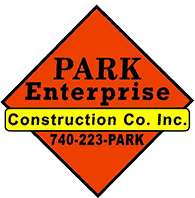
General contractors would love to have a crystal ball. We would love to know before walking on your site that crews will hit a massive underground rock formation or an old, rusted oil pipeline. We would love to know ahead of time if municipalities and environmental groups will look favorably upon your project.
Regrettably, we’re not psychics. But due diligence and effective communication between you and your general contractor go a long way toward construction site preparation.
Construction Site Preparation Requires Disciplined Analysis
Come to your contractor armed with the following pieces of knowledge:
1. What You Actually Need
Know your plan, and know it well. Before you even approach a contractor, have an idea of the scope of the project and how it will impact:
- Your budget
- Current plans
- Future plans
Don’t overextend yourself (or more importantly, your budget). Have a concrete idea of what you can afford, but don’t forget to give yourself some extra wiggle room for unforeseen problems. Strong financial planning will ensure you don’t end up with an oversized bill you can’t pay - or at least that you can afford making debt payments with creditors.
Does your current project fit the goals or mission of your business or organization? Will you be able to fulfill those goals as construction takes place? Have a clear picture of each proposed construction element and how it will impact your clientele.
2. Site Layout and Planning
Even the most basic construction sites are more complicated than they look. A site may appear to be perfectly square and flat, but there could be many variables both above and below the surface.
An initial site survey should detail the overall layout and both natural and manmade surface and subsurface features around which crews will work. From there, your architects and contractor should develop detailed drawings and an action plan.
The basics of layout planning include:
- Total area available for building
- Site location (for zoning and logistics)
- Boundaries
- Soil types (clay-based, silt, sand, loam, etc.)
- Existing buildings and utilities
- Demolition needs
- Waste disposal
You and your property manager should assess the site to effectively communicate with the general contractor regarding these physical realities and potential obstacles. Construction crews will encounter them soon enough (and probably will learn some details you weren’t aware of), but an initial discussion detailing your site’s nooks and crannies will help in developing a sound strategy.
3. Local Geology
Different soil compositions (mentioned above) each affect construction differently. For instance:
- Cohesive soils with high clay compositions are good for foundations, while some silt-based compositions do not work well if not mixed properly.
- Granular soils with high sand or gravel content are good for drainage and sturdy compaction
- Organic soils comprising peat and decaying vegetation are sponge-like and are also considered poor choices for foundations
Furthermore, underground rock formations often require explosives for excavation. Subsurface gas and water pockets can also pose hazards.
4. Temporary Structures
Your contractor may also need to build access roads or temporary structures to house administration, equipment, and building materials. They’ll need to know the available free space beyond the building footprint. Essentially, is there enough space available for accessory buildings and projects to support the construction effort?
Be aware, though, temporary structures and access/exit roads do cost money to build and demolish. This could be a necessary line item in the project’s budget.
5. Public Safety
Your site under construction is a dangerous (sometimes deadly) place (and a legal nightmare) without proper signing and physical barriers around the perimeter. To children, a construction site could look like an alternative neighborhood playground. To vandals and thieves, it could be a place to steal free scrap metal or cause damage.
Signs serve 2 purposes:
- Attract people’s attention
- Tell them something important
Much of the public safety responsibility falls on your site development contractors once they assume control of the location. It should be very apparent that it’s an active construction site by the contractor’s signage, fences, and other barriers. But your neighbors and friends could still use a heads up on your part, informing them:
- The general nature of the work
- The project timeline
- Whether to expect construction noise (and when)
- Alternate traffic routes to avoid delays
- Third-party sources for additional information or to file complaints, if necessary
Even if your project requires a level of secrecy, your communication to the community is sometimes even a legal obligation.
6. Permitting, Fees, Zoning, & Insurance
Local municipalities and counties often require commercial building permits to perform different types of work. Here’s some paperwork and helpful tips from around Marion, Ohio.
- Ohio Application For Building Plan Approval
- Marion County construction permit zoning application
- Building permit process for Franklin County
- Building to-do list for Marion Township
In many cases, experienced contractors and architects will pursue the permitting paperwork on your behalf. In other cases, you may need to go before a local Zoning Board to present your plans and apply for a special use permit or variance. Government bodies will want to know how your property upgrades will impact the surrounding properties and neighborhood atmosphere. They’ll also probe any potential negative environmental impacts (in addition to those covered under state or federal law).
Furthermore, never move forward on a project if the contractor and subcontractors are not properly insured. This protects the property owner, construction workers, and even visitors to the site should unexpected physical or financial damage occur.
7. Material Sourcing and Logistics
Your contractor likely has prefered vendors for materials. You may have your own sources in mind. Location may also play a role in determining which sources make the most sense from a logistical perspective.
There will be a considerable amount of construction material to truck in and, in some cases, large amounts of demolition and excavation debris to truck out. Work with your contractor to plan appropriate routes, keeping in mind many local roadways, bridges, and overpasses have weight and clearance limits.
8. Federal and State Environmental Regulations
Certain environmental regulations carry both civil and criminal penalties. These could be up to $27,500 per day, or $250,000 AND 15 years in prison.
Discharging everything from stormwater runoff to volatile chemicals has a mandated procedure and an associated punishment for non-compliance.If your project may require or will produce hazardous materials, get on the same page with your contractor to develop an action plan and communication with environmental authorities.
Furthermore, Past use may have left underground utility lines and tanks or even a legacy of industrial contamination that’ll need to be removed before construction begins.
9. Federal and State Historical Registries
Before you tear down that structure, ask yourself, if it’s a treasured piece of history. Even renovating a structure registered with federal and state historical preservation authorities involves strict building restrictions to maintain structural integrity and original characteristics.
Unsure? Visit your local historic society or check the National Register of Historic Places or Ohio’s State Historic Preservation Office. Even if your property has no historical significance, its history could have a big impact on future development.
But Most Of All -- Experience Matters
Experience speaks volumes in construction, as with any profession. Before you choose what contractor to begin your project with, look into their history.
Site work construction is a detail-oriented process with many possible variables and outcomes for which only years on the job can prepare you.
Choosing an experienced contractor makes the most difference in areas such as:
- Legal Expertise
- Efficiency
- Material and Supply Procurement
- Quality Workmanship
- Honesty
Construction professionals learn many valuable lessons over the course of a lengthy career, whether they have one specialization or an array of capabilities. Those years of experience mean everything, and those lessons will ultimately serve you well.



